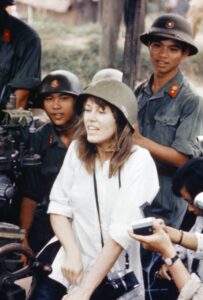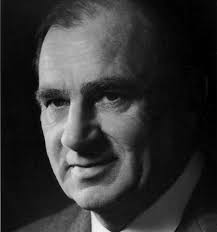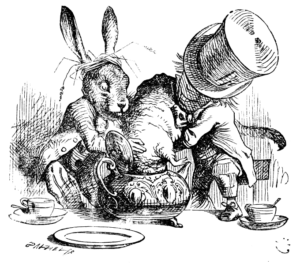The pollution index in Ha Noi as we drove around the city in an electric car last week was 5. Melbourne and Sydney were 1 and 2 respectively on that day. Only Kolkata in India was higher at level 6.

Vietnam is in a state of construction. Heritage listing does not seem to be a word much used in this city. Driving from Ha Long to Ha Noi is an example. Driving down the long esplanade along Ha Long Bay, to the left are the long sandy beaches and beach umbrellas and beyond, the Bay is littered with Nature’s limestone obelisks. On the right was a wasteland boarded up waiting for the next multi-storied building, the condominium development of which dog beachfronts all over the world, especially when the sand seems to be endless and the sun shines benignly as it does generally in October and November in northern Vietnam.
I had heard that Graham Greene had written The Quiet American in the Metropole Hotel in Ha Noi where he had a dedicated suite on the second floor. The Quiet American, which has been twice filmed, is said to have presaged the American War. I said casually some time before that I would like to stay there, but when we arrived there from Ha Long, it was very much a snapshot of Vietnam on its way to becoming yet another “Asian powerhouse”. The Bamboo Bar beside the swimming pool exemplified what life in Ha Noi in the period of French occupation may have been like. Here Graham Greene, as he wrote, would have had by his side his signature cocktail – gin, Italian sweet Vermouth and cassis – a Negroni without the Campari. For my part, I ordered one and was surprised to see it was served with raspberry sorbet which one tipped into the drink à la affogato. This accompanied my steak tartare rather than any novel in progress.
Hotel restaurants exist to recreate the theme of past privilege within a cocoon of luxury; where celebrity nudged shoulders with other colonials – and where life shone through an air of colonial insouciance – the Bamboo Bar as one of these inglenooks. As you move to the infinity pool through a tropical garden surrounded by the brilliantly white hotel building, it is easy to imagine this as once an oasis to get away from swirling hoi-polloi in the streets. Now, rather than colonial expats there are tourists and local citizens. Business deals are being done in this relaxed atmosphere. The French colonial rulers have long since gone.
Ha Noi inter alia is a religious jumble of pagodas, Confucian temples and Christian churches. The cathedral is grey, concrete on granite, a hint of the grisaille in appearance of its façade, with apologies to Notre Dame. Ho Chi Minh’s mausoleum is pointed out to us as we drive – a place of secular homage.

The hotel is on the edge of the Old Quarter, with its narrow streets, the most spectacular of which is Train Street, where trains pass along within touching distance of the dwellings and the now closed cafes. In many of the promotional pictures, tourists are seen walking the railway line. No longer, after we were told a tourist was killed by a train, which effectively gave reason for access to the street to be closed to tourists. The Old Quarter is what one would expect in an Asian city, and even though the government is clearing swathes of it, it still survives with the distinctively curled tiled roofs, the plethora of shop signage designating its cheek by jowl activity, the narrowness of the façades, often three-storied, like the “Father, Son and Holy Ghost” three-tiered levels as found in English town houses. Houses and workshops are crammed together. There is Silk Street, yes complete with worms; and lantern street; specialty streets abound.

By contrast outside the Old Quarter, there are the wide boulevards, and the old colonial buildings here have been converted into government buildings – the government is in session and the National Assembly Building is an off white cube – the exterior walls are clad with vertical slats. Circles and squares – all with symbolic significance. There are 400 parliamentarians – we are stopped as two uniformed motor cyclists with sirens blaring sweep past followed by a bus carrying politicians off to lunch; no separate limousines here.
We pass the house which General Giap owned. The large property is surrounded by high walls. Through the gates we can see several jeeps. Giap died in 2013 but his family still owns the property. But I thought, what about the jeeps?
To be frank, Ha Noi was a series of glimpses, except when the time when we were parked while my wife walked around, the passing parade was of a bustling live society, and the police have a low profile as the people go about their daily life. It seems that the Vietnamese are an industrious lot, generally friendly, willing to help and if there is widespread poverty it is hidden. Shoes are said to signify the prosperity of the country. The Vietnamese are well shod.
Just before we went back to the hotel, we had the signature drink created by Nguyen Van Giang, the head chef at the Metropole Hotel, just after WWII. Our guide darted into a nondescript building, down a passage, and emerged with two egg coffees – espresso coffee with this mixture of egg yolk, condensed milk and vanilla whipped and placed on top. My wife’s response; she bought two egg coffee cups and we await the first egg coffee on home soil.
Responding to my glimpse of Vietnam, in the end I ask myself about the American War – why? why? Then I think of Ukraine, “today’s Vietnam” – and that common modern day nemesis, Lyndon Baines Putin.
“Hanoi Jane” – Burden and Stigma
One of the people who had, for a period, intruded her celebrity status on my life – although there would never have been an opportunity for our paths to cross – has been Jane Fonda. We are about the same age, and both lost our mother when we were young and, whether it had any connection, Fonda has confessed to growing up with low self-esteem. I read that her father was demanding; and I remember one of my father’s sayings was “What are you doing that for, John?”
There were three films she made early on her career which still stick in my mind. They were:
“Barefoot in the Park”
“Klute”
“Julia.”
All are remembered for different reasons. The first was fantasy, but it was easy as a newly married couple, as we were, to identify with a feisty couple in the movie adapted from the long running Neil Simon Broadway play. Robert Redford was the stage male lead, and Jane Fonda was the female lead – the trials and tribulations of the newly-married couple, girl and boy in love; girl and boy divorcing; girl and boy reconciliation, and the glorious sunset. I saw this film before I had ever been to the New York. New York that Woody Allen knew so well; it is a great backdrop to comedy where interpersonal tension is being played out. There is a certain brittleness in all these comedies, and Jane Fonda character epitomised this. However, what attracted me at that time in New York was the ride through Central Park in a horse drawn carriage. It is kitsch, pure kitsch – but watching the film it seemed to be something I wanted to do with my then wife.
When we did go to New York in 1971, we stayed at The Plaza Hotel. Outside were the drivers with their horses and carriages. The area exuded the pungent smell of horse excrement and to get to the carriage one had to pick one’s way through it to get to a carriage. The allusion was gone.
Klute was a great film. We saw it in San Francisco in 1971. I always found Jane Fonda edgy, with her voice just too well articulated as if she was constantly self-conscious. In many ways, she would have been perfect to play Eliza Doolittle in Pygmalion. This edginess was absorbed into her role as a prostitute being stalked. It was at this point in the film when the serial killer was about to strike, that we got up and hurried towards to the exit. There was a murmur around as we ran up the aisle – to the effect of “what the hell are they doing leaving at the climax of the movie?”. I had looked at my watch. We had a plane to catch to Australia. In those days, there was no security and boarding just was a matter of turning up and presenting your ticket and passport. We were travelling light as our baggage had gone missing somewhere between Frankfurt and Stockholm. In the end, we just assumed that Donald Sutherland, as the gumshoe Klute, had rescued her. The reaction to our exit was unexpected – you would think at such a point in the film nobody would have noticed us leaving, much less comment.
In between those two films was her marriage to Roger Vadim, and his attempt to turn her into another Bardot; but whereas Bardot was sensuous, Fonda was hardly a sex-kitten. Her approach was a bit like the school librarian doing porn, but by the time of Klute she had lost the “Vadim cute”, and become the anti-War activist. Both she and Joan Baez were photographed in Ha Noi. She earned the nickname “Hanoi Jane”, because of the ill-judged picture of her, wearing a helmet, behind a Vietnamese anti-aircraft gun. The activist label fitted Joan Baez more comfortably, as her protest against injustice and war always seemed to have a deeper commitment. After all, Fonda married Tom Hayden, well-known as a foremost anti-War activist, and they stayed married for 17 years from 1973, until Hayden called it quits.
The third film “Julia” was a complete tour de force. Jane Fonda here played Lillian Hellman, the American playwright. The Julia story formed part of her memoir “Pentimento”. Vanessa Redgrave played Julia, the Jewish German student in this filmed nightmare of Germany in the 1930s. Irrespective of whether it was only the product of a fertile mind, the film was so harrowing in its depiction of life in Nazi Germany that whether it was total fiction or not was irrelevant in depicting such a spectacle of horror. If there was any doubt about the quality of Fonda’s acting ability, this film dispelled it.
Jane Fonda after her marriage to Hayden ended in divorce in 1990 married Ted Turner, the founder of CNN, and I lost interest in following her career. In fact, the only times I seemed to remember – but remembered vividly – were those three films, and her antics during the “American War”. In film work, she was also in “Cat Ballou” and then in “Coming Home”, a film about the aftermath of the War; and then “On Golden Pond”, which played out a role with film and real life coinciding in the relationship between a father and his estranged daughter. Katherine Hepburn played a prominent role in the film since it needed such an actress with presence as she had. It was a tribute by Jane to her father, who died the year after the release of the film, in 1982. None of these made the same impact as the three other films I mentioned above.
 Jane Fonda remains on the Vietnamese screens in the garb of the anti-War heroine who visited Vietnam and was photographed behind a weapon designed to shoot down American planes. Never mind, that the installation was there to protect Ha Noi from the destruction being wrought by American aircraft – Ha Noi was carpet bombed, certain sections of Americans who were traumatised by the War exercise their God-given right to abuse her, even spit on her face with tobacco juice. She has apologised for her Ha Noi appearance, said she was sorry…
Jane Fonda remains on the Vietnamese screens in the garb of the anti-War heroine who visited Vietnam and was photographed behind a weapon designed to shoot down American planes. Never mind, that the installation was there to protect Ha Noi from the destruction being wrought by American aircraft – Ha Noi was carpet bombed, certain sections of Americans who were traumatised by the War exercise their God-given right to abuse her, even spit on her face with tobacco juice. She has apologised for her Ha Noi appearance, said she was sorry…
When his and Fonda’s son married, Hayden concluded his toast to the couple and reportedly introduced Fonda by saying, “We know how Jane always becomes the part she’s playing. Hopefully, that won’t be the case in our son’s marriage!”
Maybe, that interlude when I selected Fonda films was to reinforce my view of a certain other lady. I don’t know. Funny thing to think about leaning over a writing desk reaching for my mouse in a posh hotel in Ha Noi.
Requiem for a Neo-Liberal
CNN National House USA Mid-term Exit Poll
R +13 65+
R +11 45-64
D +2 30-44
D +28 18-29
I remember lying on this lawn watching the kites leisurely drifting overhead in the thermals against a clear blue sky. Broome in July of that year was a leisurely place, when I had the opportunity to try and absorb “The Road to Serfdom”, Hayek’s classic treatise underpinning of neo-liberalism. It was a time in the late 1970s.
Hayek bangs on about freedom. “The most effective way of making people accept the validity of the values they are to serve is to persuade them that they are really the same as those which they, or at least the best among them, have always held, but which were not properly understood or recognised before.”
 Hayek, all in one sentence – authoritarian, paternalistic, elitist. His book is an attack on democracy cloaked in academic jargon, I thought at the time, as I rolled over and watched the drifting birds. He offered no structure to replace democracy. Yet it took time to show neoliberalism to be an illusion, reaching its apogee in Donald Trump. In the meantime, be “vewy, vewy, vewy” afraid since Elmer Fudd is “vewy, vewy, vewy” likely to run for President in 2024.
Hayek, all in one sentence – authoritarian, paternalistic, elitist. His book is an attack on democracy cloaked in academic jargon, I thought at the time, as I rolled over and watched the drifting birds. He offered no structure to replace democracy. Yet it took time to show neoliberalism to be an illusion, reaching its apogee in Donald Trump. In the meantime, be “vewy, vewy, vewy” afraid since Elmer Fudd is “vewy, vewy, vewy” likely to run for President in 2024.
But perhaps I never could distinguish between Hayek and the Beach Boys in “Serfing USA”. From this latest USA poll it seems that the younger generation, as the figures indicate, at last are replacing the “E” with a “U”.
Surfing is a more more shared relevant experience to the younger generations than serfdom under an old man with an addiction to fifty shades of yellow.
It is about time that politics is less about Me but more about You, the community. What! Idealism building to a crest? Not a red or blue wave, just in these perilous times the wave vanquishes that authoritarian madness that we have to tolerate with people like Trump, Putin and every other ruler who attempts to assuage his deep feelings of self-loathing by transferring these dark recesses of their collective minds to the destruction of the World.
V’loutlandish
 There we were on the South China Sea, and since the sea was a little rough, and balance is already a problem, I started to do some channel surfing. And there it was, unexpectedly, the 2022 Melbourne Cup being shown in real time. What other horse race would be shown on a French ship in Vietnamese waters. Not an Everest; nor a Kosciusko; not even a Wycheproof. Despite the huge amount of money which this guy V’landys seems to be able to fling on horse races for the benefit of Arab sheikhs and other deserving racing nobility, such as Lloyd Williams and the Waterhouses and their ilk. V’landys has, as far as I know, not arranged for his wonderful collection of highland flings to be shown in the South China Sea. And do not I think he would care a damn if they were ever shown – probably not.
There we were on the South China Sea, and since the sea was a little rough, and balance is already a problem, I started to do some channel surfing. And there it was, unexpectedly, the 2022 Melbourne Cup being shown in real time. What other horse race would be shown on a French ship in Vietnamese waters. Not an Everest; nor a Kosciusko; not even a Wycheproof. Despite the huge amount of money which this guy V’landys seems to be able to fling on horse races for the benefit of Arab sheikhs and other deserving racing nobility, such as Lloyd Williams and the Waterhouses and their ilk. V’landys has, as far as I know, not arranged for his wonderful collection of highland flings to be shown in the South China Sea. And do not I think he would care a damn if they were ever shown – probably not.
Nevertheless, the Melbourne Cup remains still the icon borne aloft in the minds of the small men and normal sized women who are named jockeys, and the men and women who are called trainers – and of course the Innocents, the owners, people inured to throwing their money down the equine toilet, as though it were tossing three coins into the Trevi Fountain in Rome. As they sang in the eponymous song: “Make it mine”, as they wished, tossing their money away.
Democracy at Work
Excerpt from Boston Globe
 After a tumultuous summer during which his company temporarily lost its liquor and entertainment licenses after fights broke out at the venue and on the Block Island Ferry, Ballard’s Beach Resort owner Steven Filippi may have lost his unopposed bid for a town council seat.
After a tumultuous summer during which his company temporarily lost its liquor and entertainment licenses after fights broke out at the venue and on the Block Island Ferry, Ballard’s Beach Resort owner Steven Filippi may have lost his unopposed bid for a town council seat.
The businessman, who was on the ballot (unopposed), received just 92 votes, while more than 1,050 people wrote-in alternative candidates. The three candidates with the most votes will win the three open seats on the Block Island* Town Council, which also serves as the island’s licensing board.
*Block Island is an island in the U.S. state of Rhode Island located in Block Island Sound 14 km south of the mainland and 23 km east of Montauk Point, Long Island, New York, named after Dutch explorer Adriaen Block. Population 1410.
Mouse Whisper
I had just come back from visiting my bush relatives, the Marsh Yellows, and was nibbling on a piece of Roquefort Grand Premier Bleu, when I heard him say to nobody in particular, “Well, fancy that, born on the same day, same year as Tom Hayden, the prominent anti-war activist. Married to Jane Fonda for 17 years. You know it is a fact of life, there are two times when you are unique – the moment you are born and the moment of death. Even though it is only for a femtosecond, you are the youngest person on the planet. Now that is one for the curriculum vitae of everybody – “I once was the youngest person on the planet”.





 But not Bobby Sands. Misguided … depends on whose perspective – a person who faced his own mortality, but yet has no church in his name. I could not do what he did, with the walls of rationalisation I had constructed to reassure myself.
But not Bobby Sands. Misguided … depends on whose perspective – a person who faced his own mortality, but yet has no church in his name. I could not do what he did, with the walls of rationalisation I had constructed to reassure myself.










